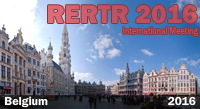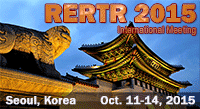IAEA/USA Interregional course on
Preparations to Ship Spent Nuclear Fuel (1997)
Physical Security Plan for
Sea Shipment of
IAEA Category II Foreign Spent Research Reactor Fuel
![]() PDF version available
PDF version available
DOWNLOAD full paper in PDF format.
Contact:
Mr. Edward Wonder
Vice President, International Div.
Integrated Resources Group, Inc.
380 Maple Ave, West, Suite 101
Vienna, VA 22180
Tel.: +1-703-319-8768
Fax: +1-703-319-8769
IAEA/USA Interregional Training Course
Technical and Administrative Preparations Required for Shipment of Research Reactor Spent
Fuel to its Country of Origin
13-24 January 1997
Argonne, IL
Physical Security Plan for Sea Shipment of
IAEA Category II Foreign Spent Research Reactor Fuel
Safeguards and Security Team (EM-62)
Office of Environmental Management
U. S. Department of Energy
January 1997
Draft Physical Security Plan
for Sea Shipment of Category II Quantities
- Preparation an EM-62 initiative following 9/96 shipments
- Security Plan a contractual requirement in RFP for DOE shipping contractor
- DOE contractor ships fuel from developing countries calendar 1997
Sierra Club vs James D. Watkins, Secretary of
U.S. Department of Energy, et.al.
(December 9, 1991)
- Federal Court found inadequate a DOE Environmental Assessment re: impact
of shipping Taiwanese spent fuel to Savannah River
- Department has to consider possibility of human intervention and attendant
risks of low probability event
- even though police might escort shipments, risk of low probability event can't be ignored
Infcirc/225/Rev. 3
- Is material self-protecting?
- 100 rads/hr. at one meter unshielded
- if not, treat as unirradiated, not self-protecting
- Cat I unirradiated 5 kg U-235 or more
- Cat II unirradiated
- less than 5 kg but more than 1 kg if enrichment is 20% or higher
- 10 kg U-235 or more if enrichment is 10% - 20%
- Reduce Cat I or II quantity one category level if self-protecting
DOE Order 5633.3B
Control & Accountability of Nuclear Material
- Moderately irradiated >15r/hr.
- Category II Attractiveness Level D U-235>50 kg.
- Category III Attractiveness Level D U-235>8<50 kg.
- Highly irradiated>100r
- Reportable Quantities
Fuel Categorization Critical
- Security for Category I quantity significantly higher than for IAEA Category
II or lower
- If Category II under DOE Order 5633.3B, protect as if Category I
Stages of Transport
- Reactor to Port of Embarkation
- Port of Embarkation
- At Sea
- U.S. Territorial Limits to Charleston or Concord NWS
- U.S. Port to Savannah River or Idaho
Scope of Category II Plan
- Focus from reactor to U.S. port
- Host country regulations (if any) apply from reactor to port of embarkation
- Do national regulations incorporate Infcirc/225/Rev.3?
- IAEA Guidelines on Physical Protection of Nuclear Material (Infcirc/225/Rev.
3) while at sea
- satisfy requirements of Convention on Physical Protection of Nuclear Material (Infcirc/274/Rev. 1)
- 10 CFR 73.37 for spent fuel applies to NRC licensee while in US. territorial
waters
- DOE Order 5632.1C-1, Protection & Control of Safeguards and Security
Interests, requirements for sea shipment of irradiated fuel
Clarify Who Does What
- Designation of U.S. and shipper country government POCs under Physical Security
Convention
- Designation of emergency response agency in host country and while at sea
- Shipper 24-hour communications center
- Cognizant DOE operations center
Draft Category II Plan
- Shipper fills in summary matrix and plan text on how shipper fulfills all
applicable elements of Infcirc/225/Rev. 3
- Several stages
- how fuel gets to exit port
- security at exit port
- security at sea
- entry into US territorial waters
Information Which Plan Will Generate
- Security capability for transport to port
- route, stop-overs, hand-overs, etc.
- guard and response force
- who is in charge
- with whom is security plan on file
- load vehicle check, locks and seals
- At sea
- who has advance knowledge of route
- escort(s)
- communications, monitoring cargo, emergency response
- At receiving Port
- hand-over arrangements
Some Key Issues
- Current threat assessment of the route and its alternatives
- How the security plan addresses the assessed threat
- Who is responsible for doing what
- capability to carry out the responsibility
- Use of "need to know" principle and tight information security
to protect access to sensitive route and security information
- Language barrier
Need for:
- Early communications with DOE on security
- Planning for security
DOE ready to help
POC EM Safeguards and Security Team
Tel.: (301) 903-9977
Fax : (301) 903-9980




